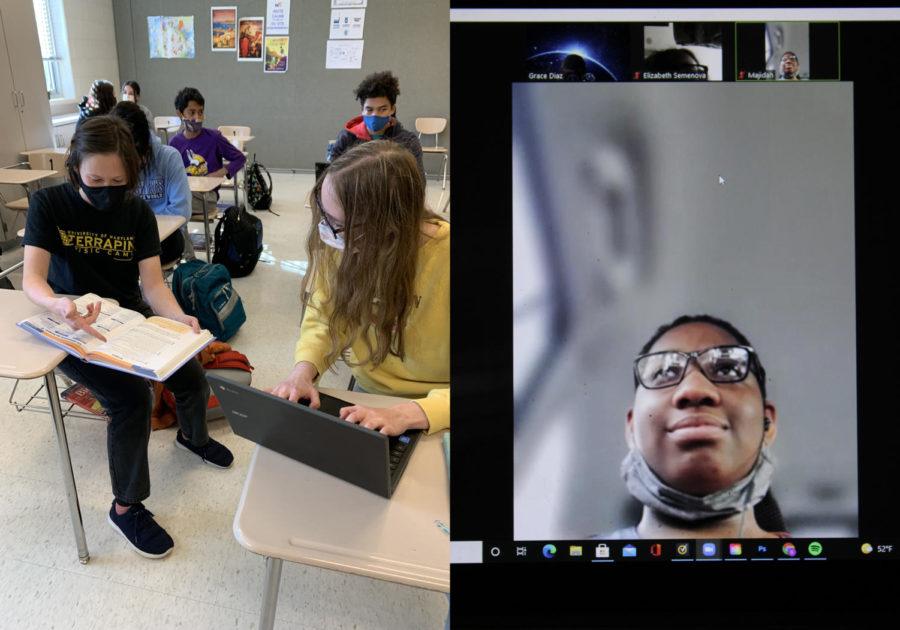Break-out rooms vs in-person groups
Students collaborate in groups and breakout rooms for projects.
December 13, 2021
From online assignments to virtual instruction, education during the pandemic was a jarring and bizarre experience. The learning environment required every student and teacher to adjust to a new normal. Breakout rooms were one element of this environment that highlighted the stark difference between in-person and virtual learning, specifically regarding collaborative tasks. Now that Richard Montgomery students have returned to in-person school, it is clear that in-person groups are far superior to breakout rooms.
Breakout rooms created the apathetic student. Without teacher supervision or real motivation to talk about relevant topics, students were not driven to participate. Black screens and muted microphone icons were a familiar sight in Zoom classes and were particularly widespread in breakout rooms. “Everyone just muted and turned off their cameras,” senior Yolanda Li said.
Unlike in-person groups, breakout rooms caused students to lose the ability to connect with their peers and engage in stimulating educational activities. “I feel like, in person, we get to interact more with people in our groups,” junior Donna Cho said. Collaboration became awkward and difficult as students struggled to share their thoughts and learn.
Attempts at subject-related discourse also frequently failed. Across classes, conversations were mostly stunted and cut off by time limits. An article from the Harvard Independent stated that material-focused breakout room discussions often felt forced or artificial. The time taken to unmute prevented natural communication and exchange of ideas, while long and unbearable silences more often than not filled the rooms as dialogue died out, contrasting the lively atmosphere of in-person groups.
These discussions did not yield productive results either. The lack of teacher oversight made it more tempting to get off-topic, whether that be completing homework from another class or scrolling through Instagram feeds. According to the Daily Titan, breakout rooms are counterproductive; rather than allowing students to fundamentally understand content or contributing to students’ education, they inhibit growth due to the impersonal virtual setup.
Breakout rooms exacerbated this detachment and distance between students, and prohibited them from creating new friendships. In contrast, discovering different perspectives and people is easily done with time during in-person groups. In-person groups not only provide an invigorating academic ambience but also help students form relationships with fellow classmates.
If there had been more emphasis on the importance of participating and listening attentively in breakout rooms, perhaps more students would have felt encouraged to do so. However alien the virtual spaces were, they did present a unique opportunity to socialize. It is a relatively intimate setting and, especially if put with close friends, can be fun. “Breakout rooms would be better if you were put in a group of people you liked or wanted to work with,” Cho said.
Breakout rooms chiefly lacked this kind of social chemistry. Since many Zoom classes were already full of silent names on black boxes, breakout rooms became an extension as well as a representation of the disconnect between students.
It is almost unfair to compare breakout rooms and in-person groups since one is clearly better than the other in nearly every way. Though students and teachers have since moved on from the awkwardness of virtual learning, breakout rooms will forever be etched in the minds of students as uncomfortable and ineffective. Reflecting on the past year, it is clear that in-person groups surpass those faceless and passive spaces of online schooling.


